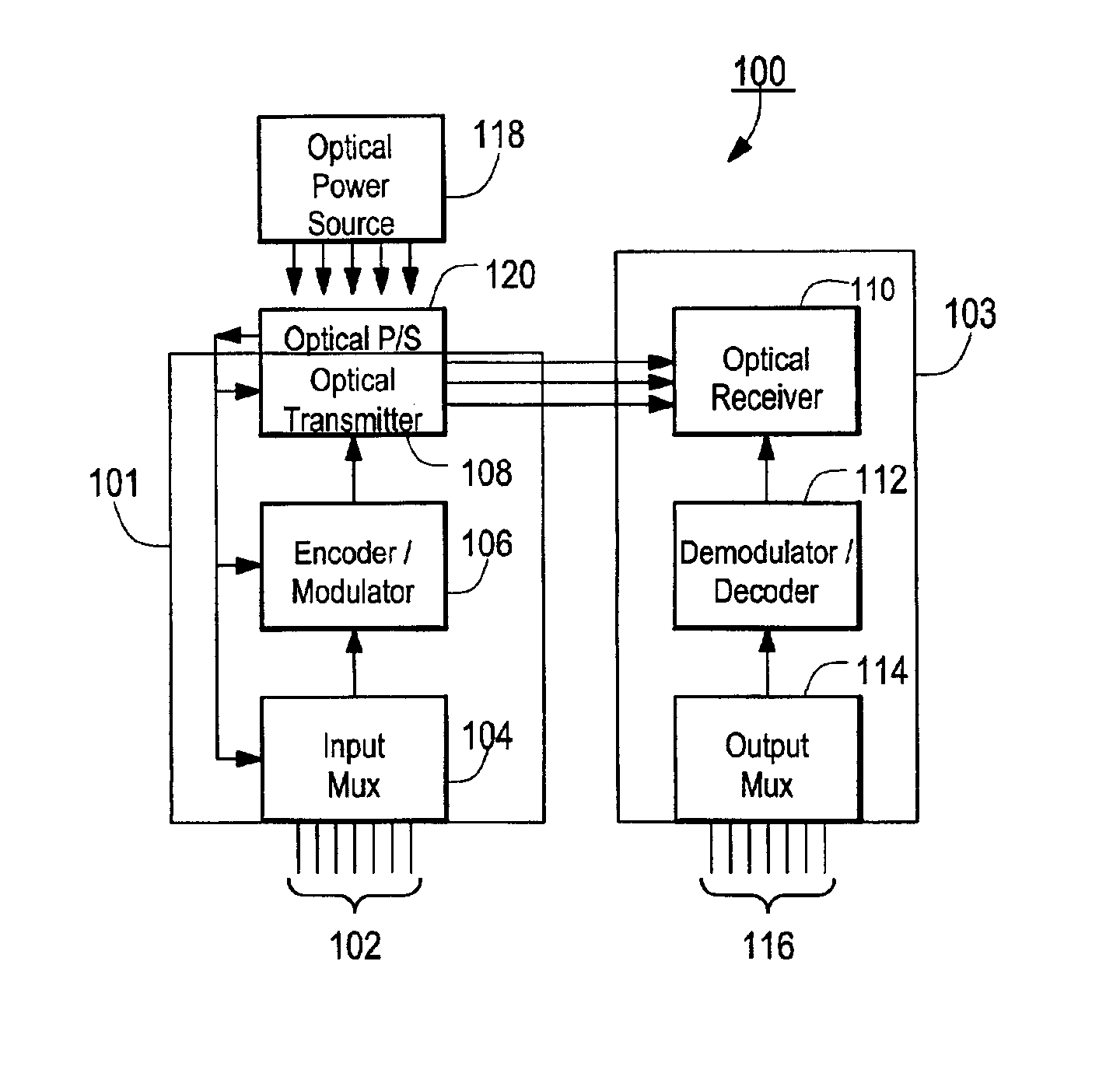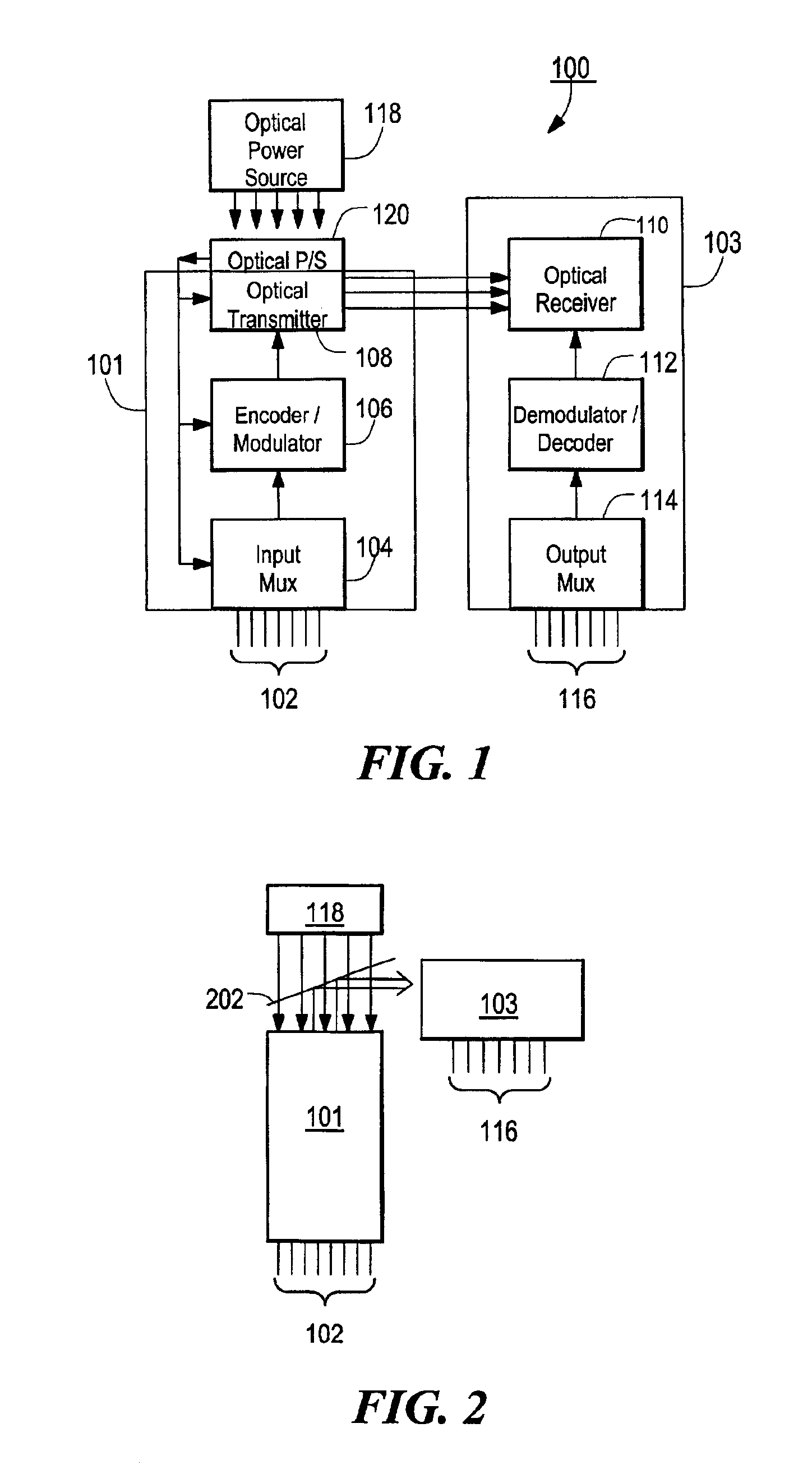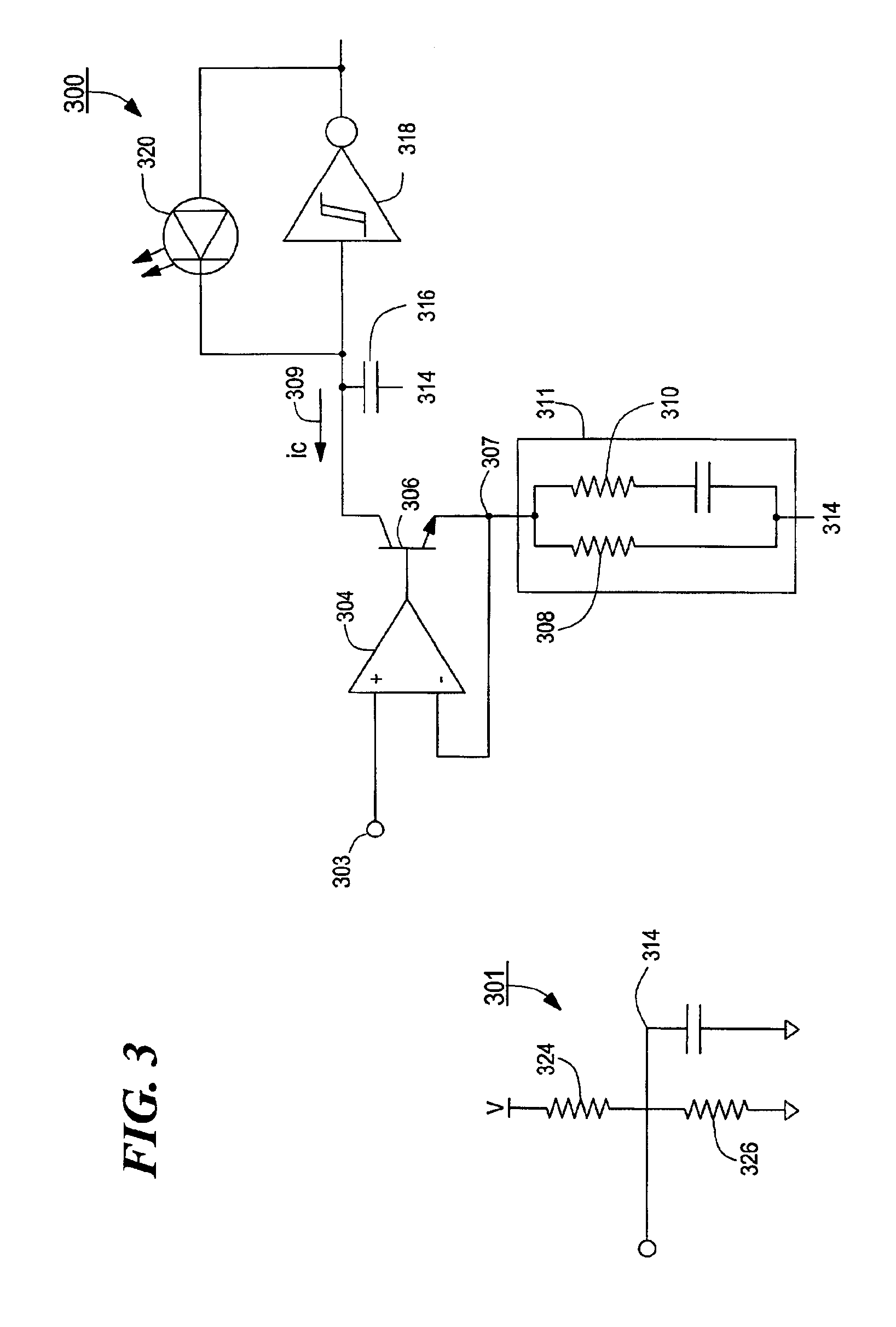Optical telemetry of data and power for wireless biomedical sensors and actuators
a biomedical sensor and actuator technology, applied in the field of optical telemetry of data and power for wireless biomedical sensors and actuators, can solve the problems of inability to determine non-invasive methods, significant potential for infection, and large size or weight of wireless systems
- Summary
- Abstract
- Description
- Claims
- Application Information
AI Technical Summary
Benefits of technology
Problems solved by technology
Method used
Image
Examples
Embodiment Construction
[0025]FIGS. 1 and 2 depict a first embodiment of an apparatus and corresponding method for the optical telemetry of data and power for wireless biomedical sensors and actuators. In particular, FIGS. 1 and 2 depict a unidirectional communications link for providing telemetry data or other operational data from a sensor or other biomedical device implanted within a body cavity. FIGS. 3, 4, and 5 depict particular circuits suitable for performing at least some of the functions illustrated in FIGS. 1 and 2. FIG. 6 is a schematic diagram depicting an optical power supply suitable for providing power to devices implanted in vivo. FIG. 7 depicts another embodiment that provides for bi-directional communications to and from the device or devices implanted within the body cavity, and FIG. 8 depicts a circuit for removing various DC and other low frequency offsets that occur due to the nature of the environment within the body cavity.
[0026]As depicted in FIG. 1, an optical telemeter 100 inclu...
PUM
 Login to View More
Login to View More Abstract
Description
Claims
Application Information
 Login to View More
Login to View More - R&D
- Intellectual Property
- Life Sciences
- Materials
- Tech Scout
- Unparalleled Data Quality
- Higher Quality Content
- 60% Fewer Hallucinations
Browse by: Latest US Patents, China's latest patents, Technical Efficacy Thesaurus, Application Domain, Technology Topic, Popular Technical Reports.
© 2025 PatSnap. All rights reserved.Legal|Privacy policy|Modern Slavery Act Transparency Statement|Sitemap|About US| Contact US: help@patsnap.com



